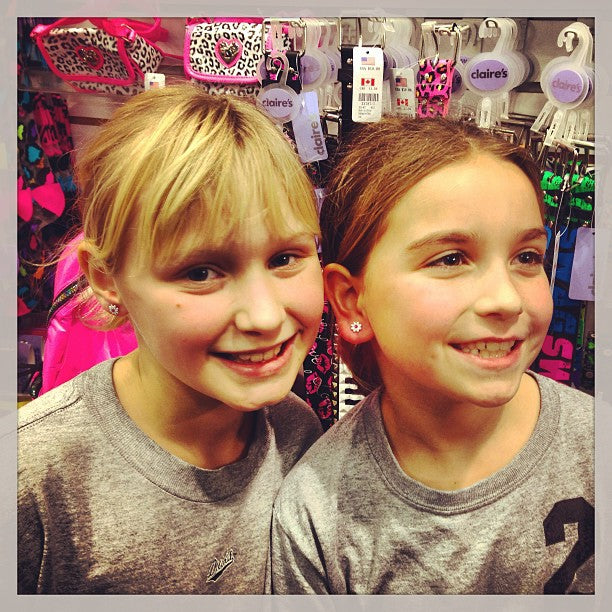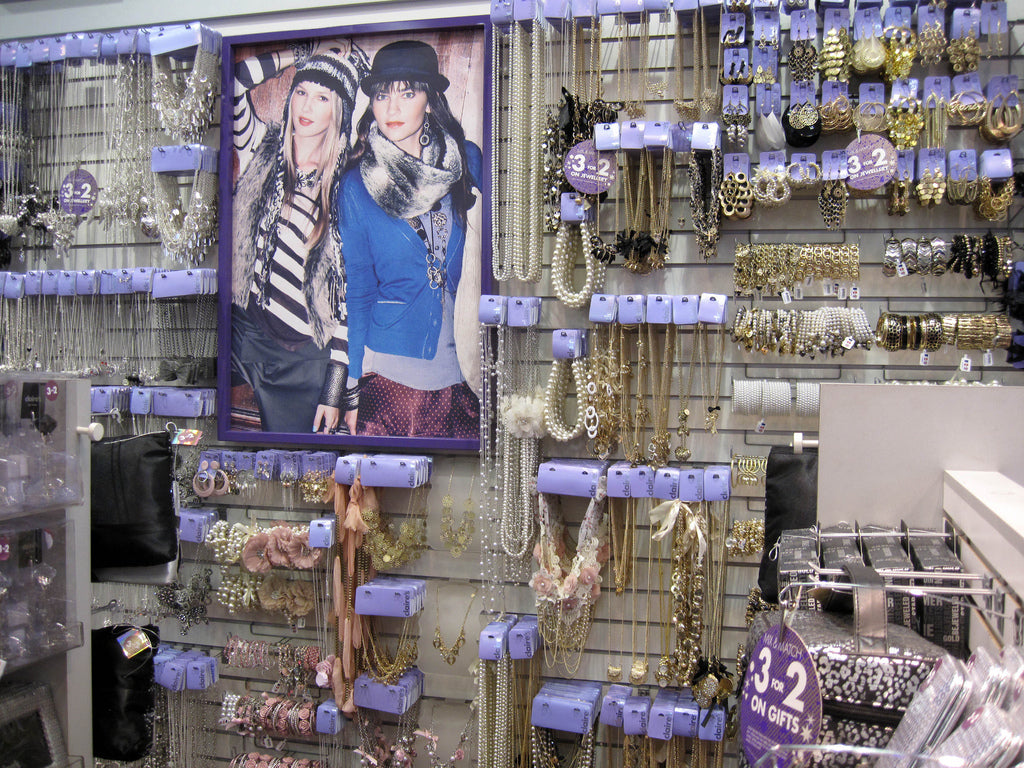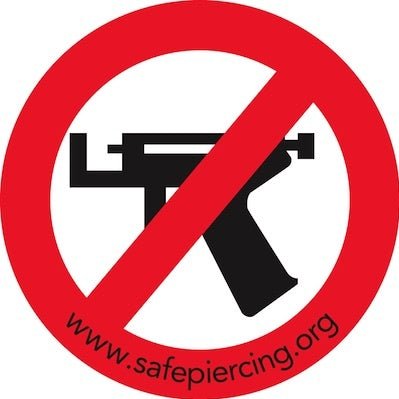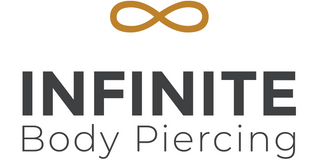
Claire’s Boutique and Piercing Guns
Last week, Bloomberg reported that Claire’s Stores, Inc., the brand that owns and manages the ubiquitous Claire’s Boutique retail chain, will be filing for bankruptcy. At Infinite, we’ve been providing safe and clean piercing services in Philadelphia for almost twenty-five years—and in all that time we have worked tirelessly to educate our clients about getting pierced at Claire’s Boutique and piercing guns. While we would never wish for the demise of another business, as Mark Twain famously (supposedly) said, "I've never wished a man dead, but I have read some obituaries with great pleasure."
For decades, Claire’s Boutique has been the go-to location for ear piercing services for kids, tweens, and teens. They are reported to have a store in 95% of the malls in the United States, and according the their own estimate Claire’s has pierced over 100 million ears since 1978. Some are already eulogizing the looming death of the chain, writing “in the landscape of a preteen girl’s mall visit in the 1990s and early aughts, Claire’s held a place of honor. It was a nexus of early stylistic self-expression.”
(Image below via Thinkretail on Flickr.)

But it was Claire’s ear piercing that has been problematic.
Year’s ago, in your grandmother’s time, piercing was often done at home, or sometimes in a doctor’s office. With the advent of the ear piercing gun in the mid-seventies, this service became marketable, and began to be cheaply available at jewelry salons all over the country. Claire’s started offering ear piercing services in 1978, several years after both Inverness and Studex introduced their own versions of the piercing gun.
Affordable ear piercing services? Sounds great! So why is getting pierced with an ear piercing gun problematic?
Piercing Guns Cannot Be Sterilized
Piercing guns are made of plastic, and cannot be sterilized. (They would melt in the heat of an autoclave.) While the cartridges that fit in the gun are single-use, the gun itself is capable of sharing disease-causing pathogens between clients. To reiterate: piercing guns cannot be sterilized between clients, and there is a risk of disease transmission when being piercing with contaminated equipment.
Piercing Gun Studs Are Inappropriate for Healing
The modified “butterfly” back that piercing studs use often doesn’t allow for effective cleaning, and this jewelry design can actually trap bacteria. Plus, piercing studs are often not made from a material safe for prolonged skin contact. While good body piercing jewelry will be made from implant-grade stainless steel or titanium, piercing studs seldom are, and are most often made from an alloy not tested and/or approved for medical use. Lastly, studs are one-size-fits-all, and for thicker earlobes too-short jewelry can cause the post to become embedded in the soft tissue.
Mall Store Employees Are Not Trained in Bloodborne Pathogens
Any body piercer in a reputable studio is going to having training in prevention of transmission of bloodborne pathogens. (Counterstaff too.) This includes how and when to use gloves, proper disinfection and sterilization procedures, and how to limit the chances of transfer of potentially infectious materials between clients. This is not the case at mall kiosks and stores offering piercing with a gun, where you will most often see piercing being done by a hourly retail employee with little to no training in either proper disinfection techniques or disease transmission.

(Image via Clara Don on Flickr)
There are documented cases of bacterial infections traced back directly to piercing guns. One of the most serious that has been reported on documented an outbreak in Oregon of Pseudomonas infections that were traced to operator error and a contaminated disinfectant bottle.
Piercing Guns Hurt. A Lot.
Piercing guns studs are not sharp. While many prospective clients are hesitant to believe getting their ears pierced by hand with a needle can possibly be less painful than being pierced with a gun, piercing guns do tend to be more painful for ear piercing. Piercing gun studs are blunt, and make their way through the earlobe with brute force. This not only results in a more painful piercing, but also in more trauma that can make healing more difficult—and this is especially an issue when piercing guns are used to pierce the cartilage in the upper ear.
Piercing guns are considered so problematic that the Association of Professional Piercers has come out against their use—so strongly that they will not accept membership in the organization from any piercer who uses an ear piercing gun in their studio.

So Why Are Piercing Guns Still So Popular?
In a word, money. Piercing services with a gun make for high profit margins with little cost. Plus, it’s cheap—much cheaper than any service we can offer at a piercing studio. With a piercing store, kiosk, or “pagoda” in almost every mall in the United States, most of the public is so used to the “free piercing with jewelry purchase” offer that it’s hard to convince them to turn away from a bargain.
We may not see the end of Claire’s Boutique. In the next several weeks, as they continue with their bankruptcy proceedings, Claire’s may be purchased by an investor who will pay off their debts and try to keep their stores open. But even if Claire’s closes down, there are so many other places that will continue to pierce ears with piercing guns. So it’s up to prospective ear piercing clients everywhere to do the research, and make the decision on how they want to have their—or their children's—ears pierced. Remember: cheap piercings usually aren’t good, and good (or safe) piercings aren’t cheap.
[Featured image via Cale Bruckner on Flickr]
Comments
Leave a comment